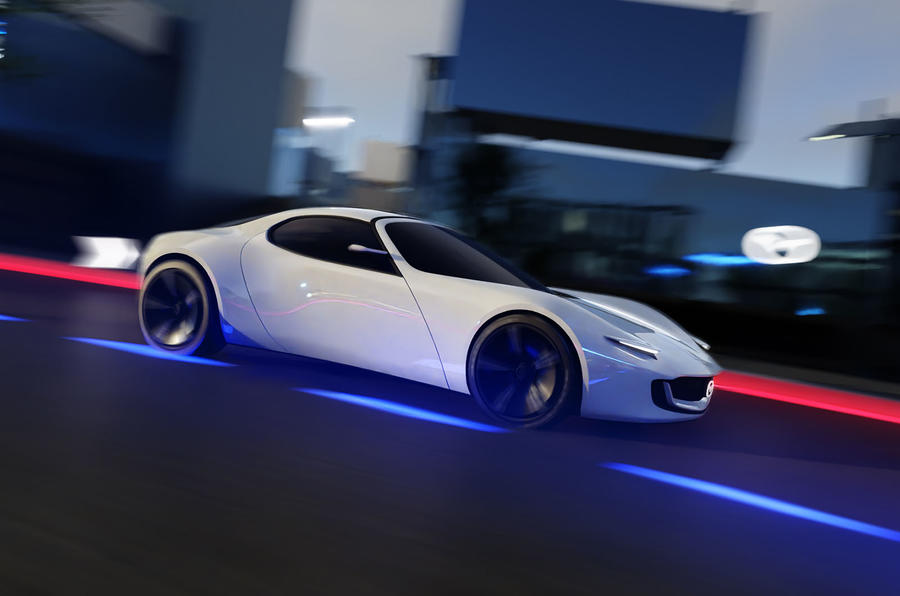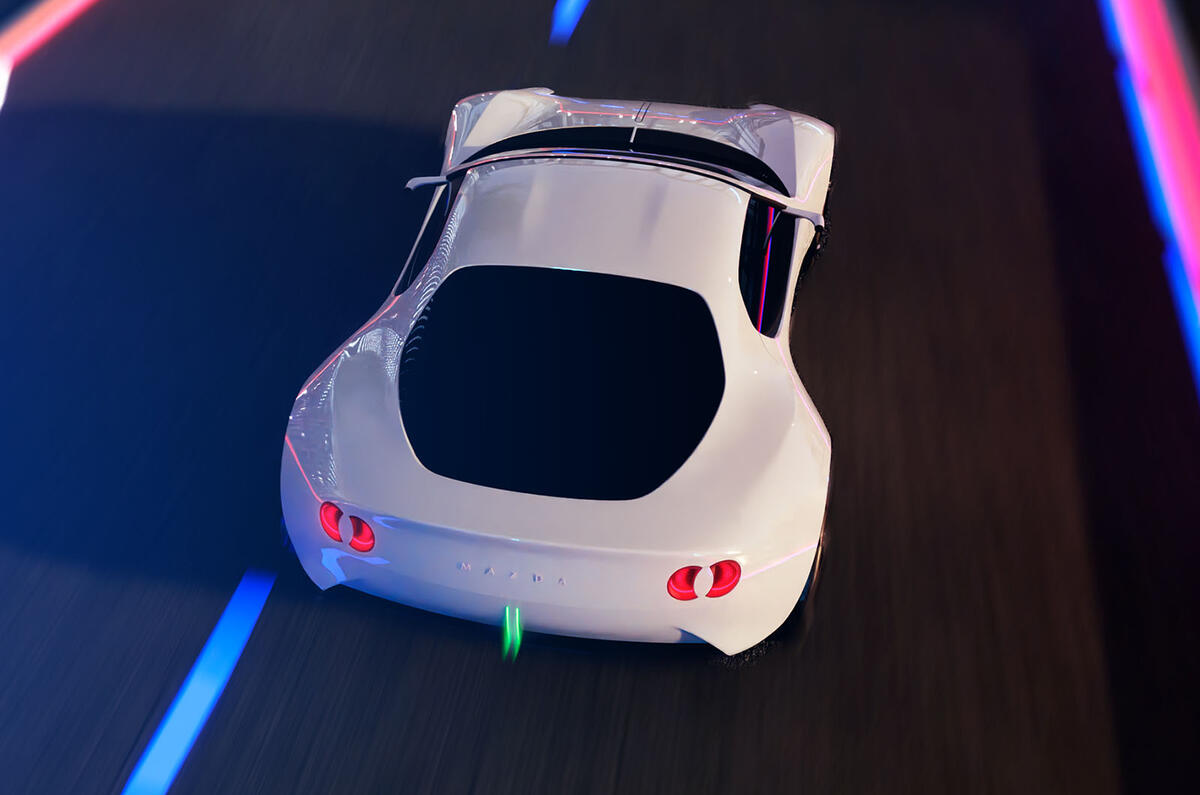Mazda has previewed a sleek two-seat coupé – which could hint at the next-generation MX-5 – alongside the announcement of an £8.9 billion investment into future electric vehicles.
Although the firm did not detail the model, instead relegating it to a five-minute promotional video at the end of a financial presentation, it was shown alongside a series of Mazda MX-5 convertibles. This suggests it could be an early look at the next-generation sports car, despite being a hard-top coupé with Lamborghini-style scissor doors.
Also shown was an early look at the model’s chassis, with a large space for a longitudinally mounted engine and a structure – likely a fuel cell or battery enclosure – behind the driver. However, the concept’s lack of exhausts – coupled with Mazda’s major investment in future EVs – seems to confirm it is an electric vehicle, in its current form.
Mazda’s Europe head of product development and engineering, Joachim Kunz, hinted in April that the MX-5 will be considered completely separate to the brand’s mainstream models.
“It’s our brand icon and it is always treated very specially,” Kunz told Autocar. “At the moment, it looks like we will have this car forever, with this size and concept and combustion engine. Of course, some day, we will have to electrify it, but we want to keep this pure concept.”
Kunz added that the MX-5 has a longer lifespan than other Mazda models – “having one generation for 10 years is not a problem for us” – so the replacement for the current ND-generation car may not break cover until 2024.
A company spokesperson told Autocar that the coupé shown was a 'vision study' model – similar to the RX Vision concept shown in 2015 – and that it is intended to demonstrate the brand’s commitment to enjoyable cars.
The news came as Mazda announced a $10.6bn (£8.9bn) spending plan aimed at accelerating its electrification efforts.
The revised strategy, divided into three phases, comes in response to the “dramatically” changing environment for the automotive industry, with emphasis on Europe.
The first phase will see Mazda consolidate its production capacity – focused on “achieving more resilience towards changes in the environment” – by strengthening its supply chains and cutting costs.
During this period, the company will launch new models under its ‘multi-solution approach’ philosophy – a pragmatic approach to electrification based on customer demand and regional infrastructure.
Christian Schultze, director of research and operations for Mazda Motor Europe, explained in a video published last year: “Based on the different customer needs for individual mobility, the local driving conditions, and the carbon footprint of available fuels and electricity, we aim to offer the best suitable powertrain.








Join the debate
Add your comment
We already know it will be more fuin than any other electric roadster short of a McLaren. If it looks like the concept it will sell and it will be BRILLIANT in typical Mazda fashion.
Agreed!
Well,it looks nice, but as a poster said, it'll cost too much, and I to would rather spend money on a soon to be extinct Ice powered Car of my choice for a few years more fun!
All sounds well behind the competition, even the mention of the step backwards to a petrol range-extender MX-30 with it's pitiful electric range despite a huge EV price.
With their prices going nuts, an EV Mazda that's also a sports car will cost a fortune when it finally happens (if it happens); I'd rather spend that huge amount of money on a proper sports car like an EV Porsche Boxster or Lotus by then.
My guess is that the Lotus and Porsche will start north of £80k while the Mazda will be £50ish and the MG £40ish. I never found the Boxster or Elise to be twice the fun of the MX5, but maybe they'll be worth the difference this time. I won't struggle to justify the cost of the MG, but would have to explain myself very well to rationalise the pricier ones.